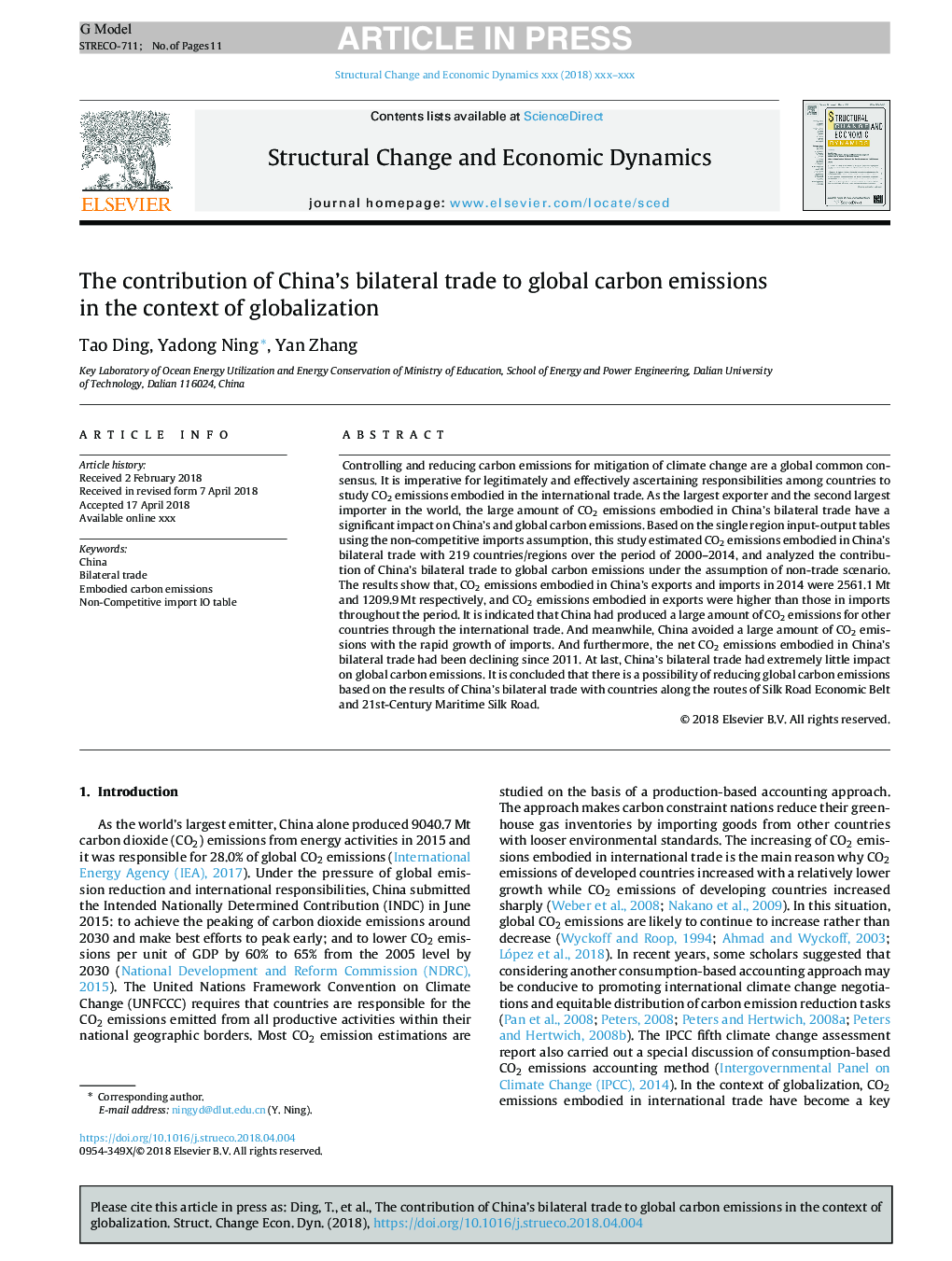| Article ID | Journal | Published Year | Pages | File Type |
|---|---|---|---|---|
| 10153828 | Structural Change and Economic Dynamics | 2018 | 11 Pages |
Abstract
Controlling and reducing carbon emissions for mitigation of climate change are a global common consensus. It is imperative for legitimately and effectively ascertaining responsibilities among countries to study CO2 emissions embodied in the international trade. As the largest exporter and the second largest importer in the world, the large amount of CO2 emissions embodied in China's bilateral trade have a significant impact on China's and global carbon emissions. Based on the single region input-output tables using the non-competitive imports assumption, this study estimated CO2 emissions embodied in China's bilateral trade with 219 countries/regions over the period of 2000-2014, and analyzed the contribution of China's bilateral trade to global carbon emissions under the assumption of non-trade scenario. The results show that, CO2 emissions embodied in China's exports and imports in 2014 were 2561.1â¯Mt and 1209.9â¯Mt respectively, and CO2 emissions embodied in exports were higher than those in imports throughout the period. It is indicated that China had produced a large amount of CO2 emissions for other countries through the international trade. And meanwhile, China avoided a large amount of CO2 emissions with the rapid growth of imports. And furthermore, the net CO2 emissions embodied in China's bilateral trade had been declining since 2011. At last, China's bilateral trade had extremely little impact on global carbon emissions. It is concluded that there is a possibility of reducing global carbon emissions based on the results of China's bilateral trade with countries along the routes of Silk Road Economic Belt and 21st-Century Maritime Silk Road.
Related Topics
Social Sciences and Humanities
Economics, Econometrics and Finance
Economics and Econometrics
Authors
Tao Ding, Yadong Ning, Yan Zhang,
